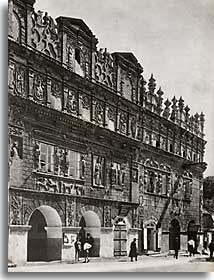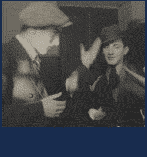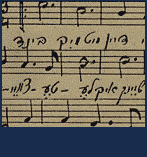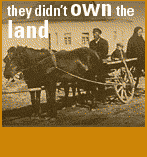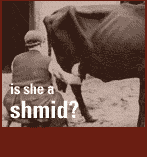

Kuzmir
"The quintessential shtetl of magic, myth and dreams". A small town on the Vistula River, Kuzmir (Kazimierz Dolny in Polish) has a charm that is perhaps not matched anywhere else in Poland, and certainly nowhere else in the Lublin region. With its picturesque landscaped terrain and unique architecture, Kuzmir is today experiencing further development, but it has long been known as a town of poets, writers, filmmakers, and others of artistic temperament. A magical place, Kuzmir was the closest thing to paradise for both Jewish and Polish vacationers hoping to replenish their senses. The river, the nature, the light, and the colors in the surroundings seemed to be special in this little geographic spot.
From the old plaza that graces the great Church at the bottom of the cliff, one can still look up and see the castle of King Casimir the Great. The castle is a construction from from the 14th century, an earlier time when Jews had just settled in the land. This particular castle evokes stories of a great love and a symbol of peace between two peoples. Reminding us of the Jewish story of Purim with some of its known characters, King Casimir of Poland is said to have married his Jewish princess, Estherke; laying the foundation for a reliable source of protection for Jews.
Jews have lived in Kuzmir since the 13th century. By the 19th century, Jews made up 50 percent of the town population. But, Kuzmir was not just a dream place, it was also a shtetl of activity, market life, business dealings, neighbors, beggars, merchants, the learned, the beautiful, the talented, and the many poor folk.
This town in the region of Lublin was famous, and became more so in the interwar period with the release of Yidl mitn fidl and the Dybbuk, two classic Yiddish films made in Kuzmir. These films, performed in Yiddish, paralled the special atmosphere the town was also projecting in Yiddish at the same time. Yankev Glatshteyn, writer and poet, in his autobiographical Ven yash iz gekumen (Homecoming at Twilight), described the Jewish folks of the city, while the writer Leyb Rashkin, in Di mentshn fun Golbozhitz, described the town in its extraordinary variety of characters. While the first is a study of Jewish temperaments and philosophies as typified in some persons, the second is a description of the vibrating rhythms a whole world of people can generate in just one little town.












